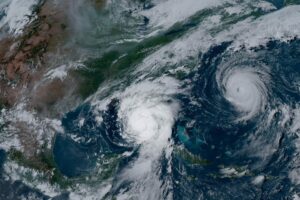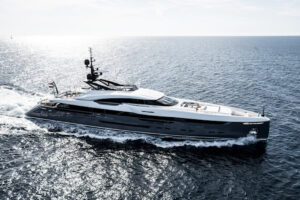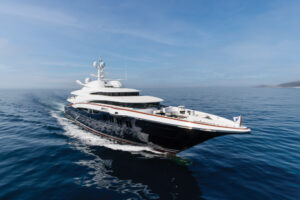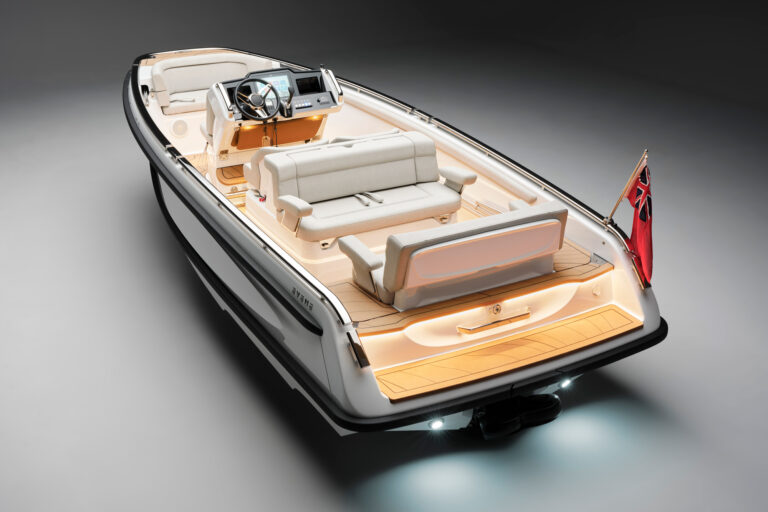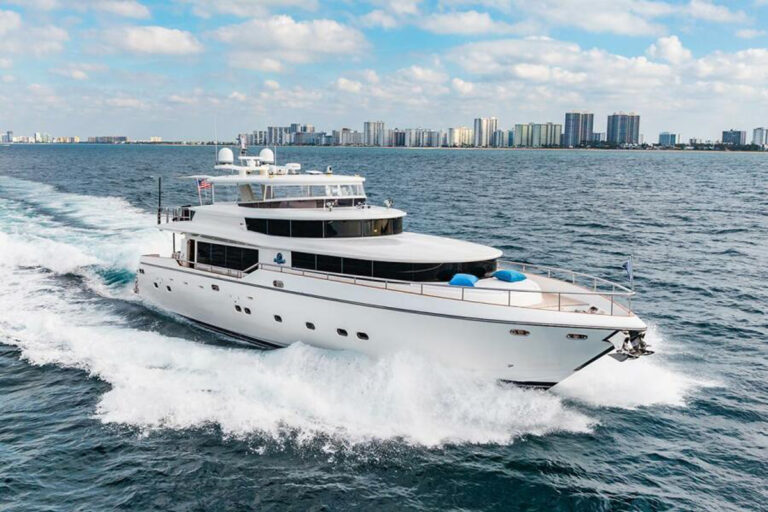The jacket flap of the third edition of Voyaging Under Power tells the story of a U.S. Navy captain named Robert Beebe. He was aboard an aircraft carrier during World War II when it occurred to him that one day, he would leave it all behind to cruise the world in a small boat. Taking the fantasy a step further, he decided he’d do it in comfort, which meant that instead of setting out on a sailboat-the preferred method of long-range cruising at the time-he would require a powerboat.
That day aboard the aircraft carrier Saratoga was the beginning of a lifelong mission that would arguably revolutionize the concept of Voyaging Under Power. The mission would evolve through Beebe’s own voyages aboard his 50-foot yacht, Passagemaker. The lessons learned and applied during his journeys would ultimately be woven into the principles outlined in Voyaging Under Power, a book some experts still deem “the bible for passagemaking.
If you dream it, as Beebe did, you’re not alone. The folks at Pacific Asian Enterprises are dialed in to this ultimate fantasy, and they decided to test the possibilities aboard their Nordhavn 40. They set up an around-the-world trip, starting and ending at the home office in Dana Point, California, all aboard a boat they built by integrating the principles of stability Beebe put forth in Voyaging. The lessons learned from their 170 days at sea are invaluable for anyone who has a passagemaker and a dream.
I learned this firsthand during the week I served as crew during a leg of the trip-on the edge of Hurricane Boris.
ELEMENTS OF STABILITY
Jim Leishman, vice president of PAE and a contributor to the third edition of Voyaging, told me the two main elements of stability found in the book and in boats built by Nordhavn are ballast criteria and paravane stabilizers.
“Ballast in the boat is roughly 10 percent of the empty weight of the boat, he said. “It works out to about 4,000 pounds. Rather than roll in heavy seas, it would slide sideways.
It certainly made a difference during our “uphill run up the coast of Mexico, just before hanging a left to point Nordhavn back toward her home port. Our final leg of the voyage began in seas so eerily calm we knew enough to get some fishing in before Mother Nature played her big joke on us. A smart move indeed, since Boris would soon rear his head. Before we knew it, Nordhavn was running through confused head seas measuring almost 10 feet and 40-knot wind gusts.
I wish I had captured an image of everyone’s whereabouts during this particularly rough spot of weather, as the casual observer would be incredulous of our predicament. One person was on watch, and the remaining three of us were playing guitar, reading books and sipping wine, in that order. In the first round of Boris vs. Nordhavn, it was pretty clear who the winner was. Though the 40-footer held her own, we decided not to push our luck when we had the opportunity to seek refuge in Bahia Navidad. From our slip there, we enjoyed a view of a 78-foot sailboat limping in from the same storm, boom broken from the motion of rough seas snapping the main around in the absence of a preventer.
While the ballast was essential to our comfort that night, Leishman also pointed out the importance of the paravane stabilizers. Beebe wrote extensively about them, and they were a key component in the success of his own passagemaker.
As one would expect, technical elements have evolved since then, such as the use of aluminum spars and some sail-type hardware. Leishman said Nordhavn has worked hard to apply new solutions to the stabilizers’ more problematic elements.
“They hummed-approaching the same noise level as the engines-like guitar stings, Leishman said of the cables Beebe used for the stabilizers. Leishman and his team eventually determined that you could tow the “fish-weights that dangle from the stabilizer cables-by using a small-diameter chain instead of a cable, that it didn’t hum or vibrate, and that it created less drag.
That wasn’t the only issue with an otherwise great concept: The way Beebe was retrieving the “fish before stowing the cables presented problems, as well.
“He would throw a hook out and catch the tow cable and pull it into the boat hand over hand, Leishman said. “That required first, catching the cable, then basically stopping the boat because of the huge drag.
The answer was found in developing a retrieval system with electric winches that require no physical pulling or lifting. The result is a paravane stabilizing system so unobtrusive-yet helpful-that you really don’t give it a second thought. The Naiad stabilizers installed on Nordhavn are there for that extra bit of comfort necessary on a long voyage.
LESSONS LEARNED AT SEA
The success of Voyaging Under Power and its impact on future Nordhavn builds aside, there were several lessons gleaned after sending more than 11,000 gallons of fuel through Nordhavn and running her-virtually nonstop-around the world.
Although there was never any threat of running out of fuel while under way, “it would have been great to have a 25 to 40 percent greater buffer, Leishman said. Also, some crews learned the importance of being able to take on large quantities of fuel very fast with a variety of nozzles. Leishman suggested a solution to this issue would appear on future Nordhavn boats.
From the standpoint of the layout, I noticed early into our trip that during the day, when our watch schedules were a bit more liberal, the social epicenter aboard Nordhavn was the wheelhouse. This trend continued throughout our voyage and made me wonder if it wouldn’t be wise to make the wheelhouse slightly larger, even if it meant sacrificing some space in the saloon, which was full only during mealtimes in calm weather.
According to reports I gathered from others on the voyage during different legs, when seas were consistently rough, the forward stateroom wasn’t utilized as often as it could have been. A stateroom amidships is more practical for a vessel that is otherwise so well outfitted for extremely long-range cruising. Leishman agreed with this, and the point about the wheelhouse.
“We’ve learned volumes that we’ll incorporate into the design of future boats, he said.
The world’s greatest shakedown cruise proved that a 40-foot motoryacht is a realistic platform for cruising the planet. Beebe would be proud. The folks who built Nordhavn augmented his work with their voyage, all for the benefit of future boats (and their owners).
If Beebe could’ve signed up for a leg of the trip, there’s no doubt in my mind that he would have.
Contact: Pacific Asian Enterprises, (949) 469-4848; www.nordhavn.com.
Voyaging Under Power is available from the McGraw Hill Co., (800) 722-4726.

